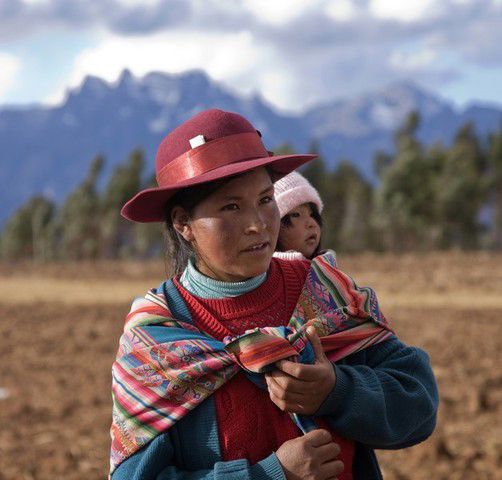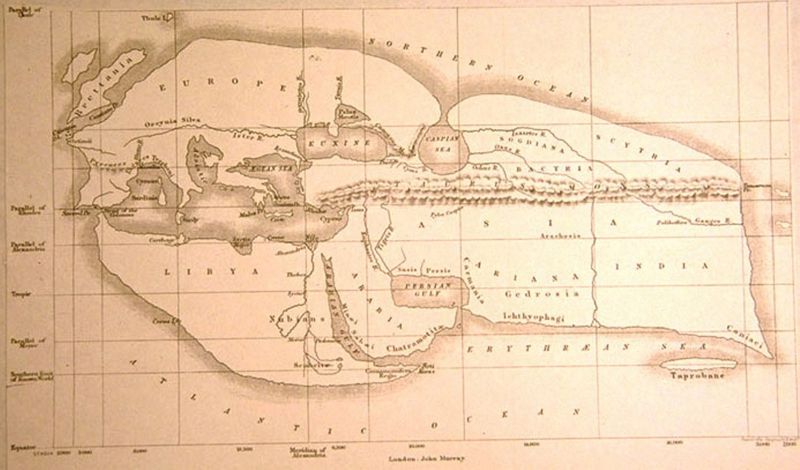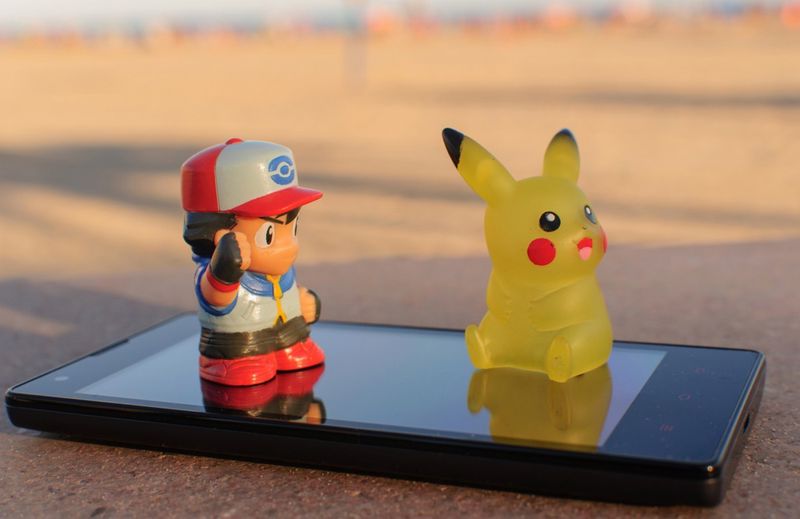Are you familiar with Earth's geography?
During this course, you will learn more about planet Earth and the various phenomena that affect it. You will also learn how human actions influence the planet.
What is geography?
Geography is a science that studies various regional phenomena connected to natural and human activities. Geographers also examine the relationship between nature and humanity. A geographer can study many kinds of different things, such as earthquakes, the effects of volcanic activity on the environment, the process of city growth, or the spread of epidemics.
Geographers are interested in answering the question "why?":
- Why does the climate on planet Earth continue to grow warmer?
- Why do cities grow?
- Why do earthquakes occur in specific regions of planet Earth?

Usually, geographers also try to answer the questions "where?" and "what?" by describing the vegetation, terrain and human populations of specific areas. For example, a geographer can describe the climate, topography, vegetation, animal species, and human population of the Peruvian Andes, and follow how these things change and develop over time.
Geographic information can be applied to many important projects. For example, geographic data helps us to plan cities, traffic systems, neighbourhoods and waste management systems.
Geographers use various tools to study the natural and human phenomena of planet Earth. Among the most important of these are various kinds of maps, which are used to illustrate the development and regional variation of different phenomena. For example, a population density map shows the variation in population density in a certain area. In addition to maps, geographers also use things like photographs, diagrams and illustrations to present and study different phenomena.
From cave paintings to Pokémon Go
Maps are the geographer's most important tools. The history of maps stretches back tens of thousands of years, to a time when humans lived in caves. During this time, humans began to draw things that were important to their way of life on the walls of the caves they lived in.
Usually, these drawings focused on portraying animals, people, and hunting activities. These ancient drawings are considered the first ever maps. Thus, the practice of cartography can be said to be older than the practice of writing.

The oldest world map dates back 6 000 years. This map, which is now visible in the British Museum in London, originates from ancient Babylonia. The map is a clay tablet that portrays the world as it was understood by the Babylonian civilisation.
Several thousand years later, Greek philosophers and scientists figured out how to calculate the shape and circumference of planet Earth.
Over a thousand years after the ancient Greeks, the European understanding of the planet was once again revolutionised, this time as a result of exploration. You may be familiar with the names of some of these explorers, who included Marco Polo, Cristopher Columbus, Vasco da Gama, and Ferdinand Magellan.

These explorers stretched out the boundaries of the known world on their journeys across the globe. During their long expeditions, they gathered information about the geography, nature and cultures of the places they visited. In addition, these explorers designed maps and illustrations, which helped them present the things they saw to others.
Nowadays, maps are everyday objects. We use map applications on our phones or computers almost every single day, when looking up directions and routes to different places in our daily lives.
Likewise, many interactive experiences, such as the mobile game Pokémon Go, use geographic data to bring together the real world and the virtual world.
Geomedia skills

When you look at the above photograph from Budapest, Hungary, you can make various observations and conclusions about the place it depicts. There seems to be a lot of traffic. Large bridges are shown to stretch over the river Danube. The city expands way out into the distance. Boats drudge through the river. Hills can be seen in the distance. The river water looks clayish and brown.
Geography is a subject that focuses on developing your geomedia skills. These skills include reading maps, making diagrams, and interpreting photographs or illustrations. As the world becomes even more technologically dependent, new devices and technological applications are replacing old tools and methods. Nowadays, maps are mostly accessed via different internet-based sites and applications. The vast amounts of aerial and satellite imagery available on the internet give us a wealth of geographic information, as do the GPS trackers in our phones, which can precisely pinpoint our location on the planet.
Test your knowledge
- The zone covers areas near the equator.
- The zone is found near the Mediterranean Sea, for example.
- The zone is found in Central Europe, for example.
- The zone is located near the North Pole, for example.
- is located in the frigid zone.
- is located in the temperate zone.
- is located in the subtropical zone.
- is located in the tropical zone.
a) In the summer months (June to August), Egypt's climate is
- hot.
- cold.
- almost rainless.
b) In the winter months (December and January, Egypt receives
- a little rainfall.
- a lot of rainfall.
- the most rainfall of all the seasons.
Hint
Explores weather and related phenomena
The field of biology that studies ecosystems
The study of rocks and minerals
The science of large-scale environmental changes affecting the Earth
Summary
- The science of geography makes use of maps, photographs, diagrams, and databases.
- Geography is a subject that requires various geomedia skills. These skills include reading maps, making diagrams and interpreting photographs.
- Key words: geography, geomedia.
